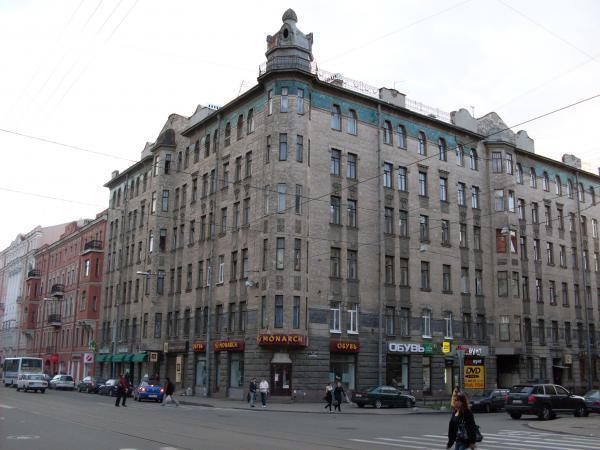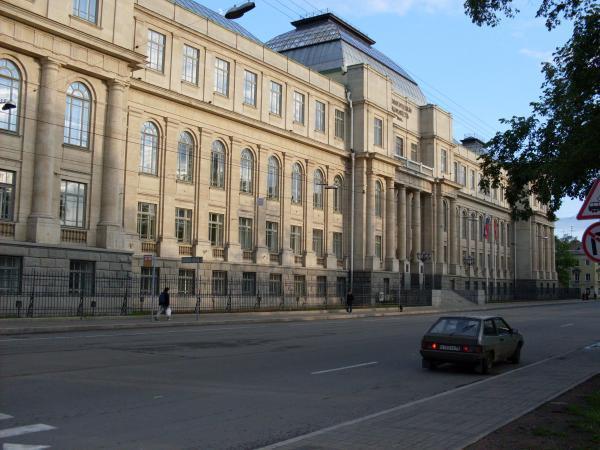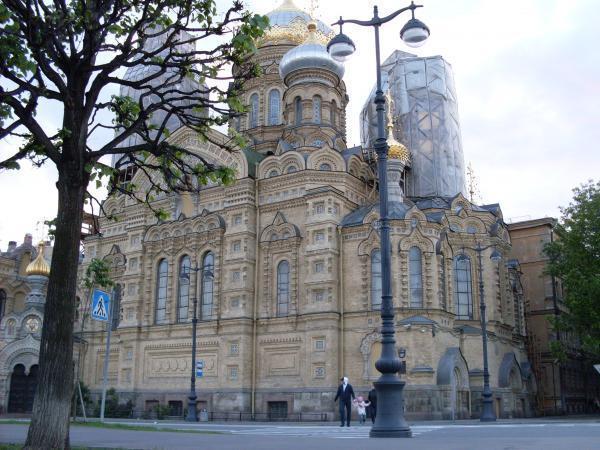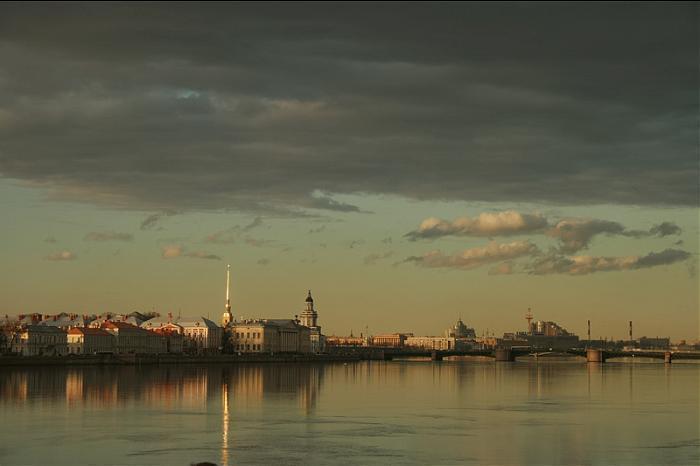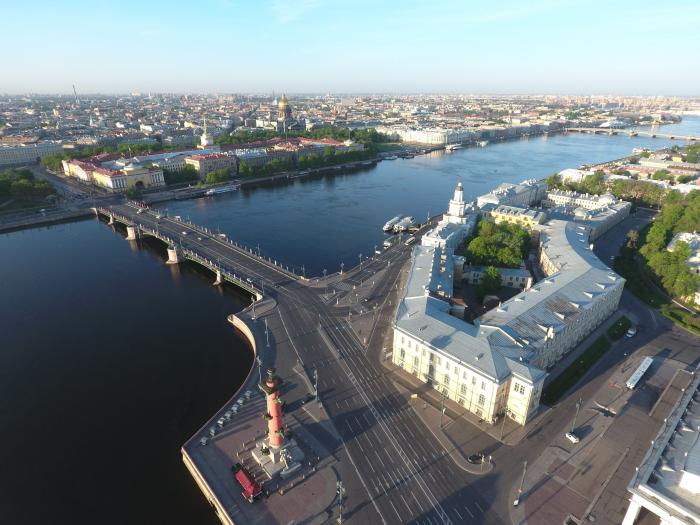Vasilyevsky Island is an island in St. Petersburg, Russia, bordered by the Bolshaya Neva and Malaya Neva Rivers in the south and northeast, and by the Gulf of Finland in the west. Vasilyevsky Island is separated from Dekabristov Island by the Smolenka River. Together they form the territory of Vasileostrovsky District, an administrative division of Saint Petersburg.
Situated just across the river from the Winter Palace, it constitutes a large portion of the city's historic center. Two of the most famous St. Petersburg bridges, Palace Bridge and Blagoveshchensky Bridge, connect it with the mainland to the south. The Exchange Bridge and Tuchkov Bridge across the Malaya Neva connect it with Petrogradsky Island.
Etymology
Speakers of Russian understand the name of the island as a possessive adjective made of the Russian masculine personal name Vasily, or possibly of the family name Vasilyev.
There are various versions of who the original Vasily was, though these may be a product of false etymology, as the Russian name of the island may in fact be a corruption of its previous Swedish or Finnish name, because the island had been shown under them on Swedish maps before its present Russian history began after the Great Northern War.
First Russian record of the island, and under virtually its modern name, is found in a registry book of 1500 land survey of Votes' Pyatina of Novgorod Republic.
It makes less probable another, a later one, Vassily-related etymology dating back to the 18th century. It is connected, like many other city legends, with the person of the founder of the present-day city, Peter the Great. One of his foremost gunner officers and military engineers, some Vassily Korchmin, had his artillery battery to ward off the Swedish navy at the spit of the island and got the tsar's letters addressed "To Vassily in the Island", thus making it another possible cause of the island's name. The man was commemorated by a lively statue in a pedestrian street in the island. Finnish etymology may lead to a corrupted compound word Vasikkasaari, Calf Island. Another known Finnish name of the island was Hirvisaari - Elk Island.
Topography
Geographically, the island consists of two main parts. The south and east of the island are old, with buildings mostly from the 19th century. The southern embankment (with its western part named after St Petersburg University located there) has some of the oldest buildings in the city dated from 18th century. That part of the island is notable for its rectangular grid of streets (originally intended to be canals, like in Amsterdam), with three lengthwise thoroughfares called prospekts – Bolshoi, Sredniy and Maly – going roughly from east to west, and with about 30 crosswise Linii forming about 15 peculiarly numbered streets going perpendicularly from south to north. The island boasts the city's narrowest street named after the artist Ilya Repin.
Landmarks
The easternmost tip of the island, called Strelka, features a number of museums, including the Old Saint Petersburg Stock Exchange as well as two Rostral columns, and is a popular tourist attraction. The edifices lining the Universitetskaya Embankment along the Bolshaya Neva include the Kunstkamera, Twelve Collegia, Menshikov Palace, Imperial Academy of Sciences, and St. Andrew's Cathedral – all dating from the 18th century. In the island center there is a considerable Museum of electrical transport organised by transport history enthusiasts. It is based at the oldest Vasileostrovsky tram depot. Another recent notable attraction was an animated floating anchored illuminated musical fountain located just off the Spit.
In contrast with the Neva embankments in the historical center, the western part of the island was developed much later, in the late Soviet times, and has mostly typical Soviet apartment blocks. A monument to Vasily, the legendary Peter I's local gunners' battery commander after whom the island may have been named, was opened in 2003.
The principal buildings of Saint Petersburg State University are located on the island and include the Twelve Collegia by Domenico Tresini (1722–44) and the former palace of Peter II of Russia.

